
To show due respect to one of the seven wonders of the ancient world, I decided to spend three days exploring ancient Petra. And I’m here to tell you, they were three fascinating days. The presence of Covid-19, and the consequent absence of crowds at tourist destinations, have been constants during my odyssey. My visit to Petra was no exception, with the place near deserted.
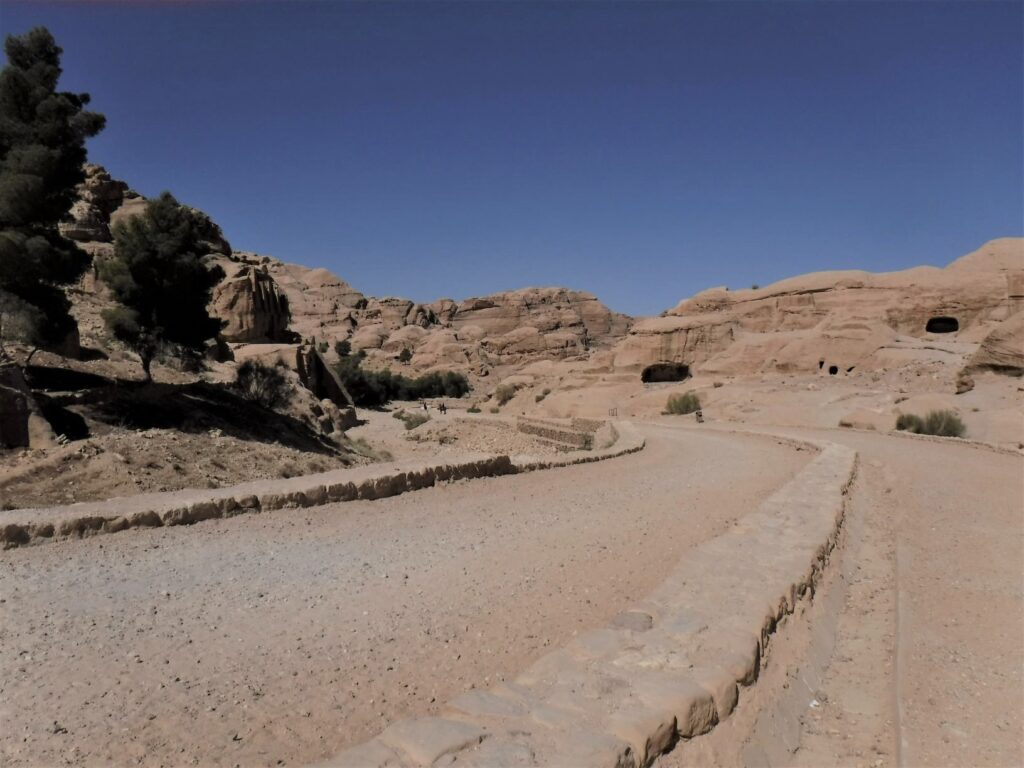
Entry to the ancient city is via the Siq, a 1200 metre long chasm of steep sided, rose red sandstone. Walking through these towering cliffs, it’s not hard to imagine camel caravans loping through the narrow passageway, laden with goods for trade in the ancient city of Petra.
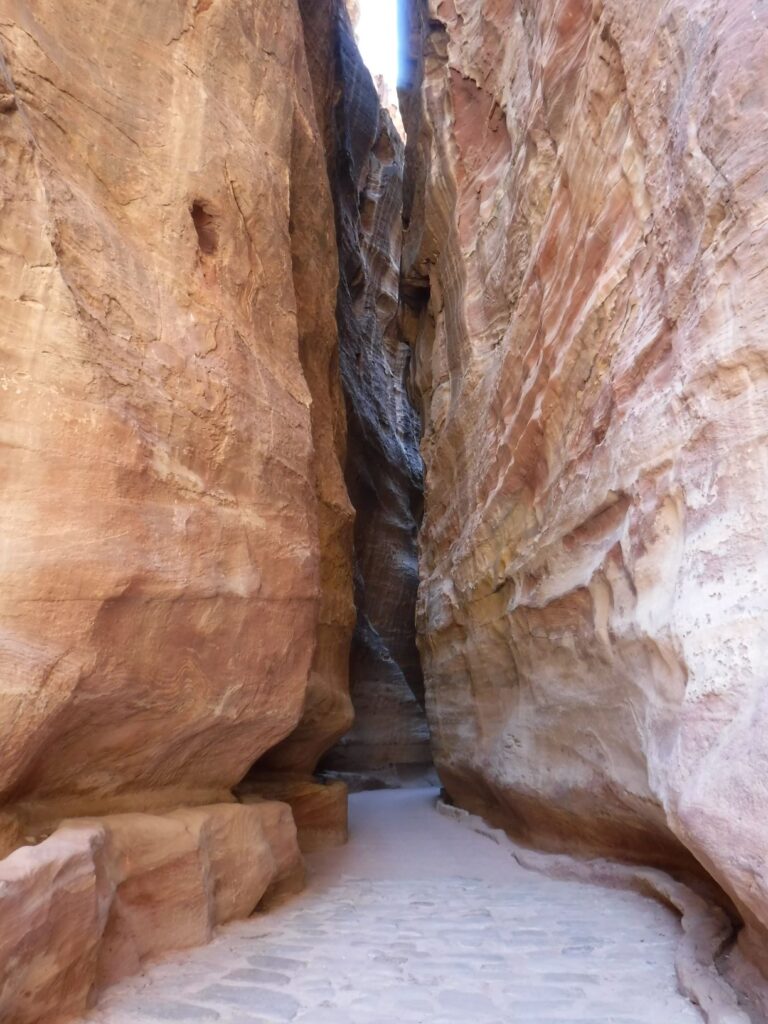
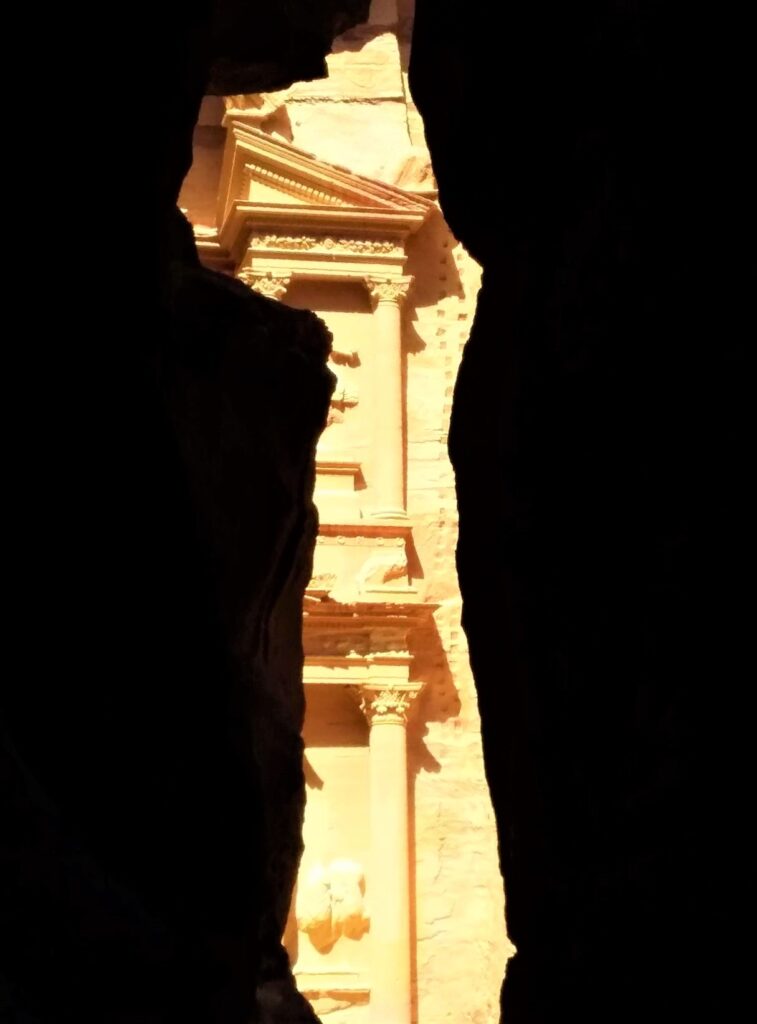
Today, primary school-aged kids try to sell postcard packs to the tourists, despite the fact that not many people send posties anymore. Their older brothers lurk nearby, producing an array of silver bangles hoping to tempt passers by.
Nearing the end of the chasm, the Siq offers a glimpse of Petra’s most famous landmark: Al-Khazna, or ‘The Treasury’.
Through the keyhole
It’s breathtaking form appears between the walls of the canyon, until you emerge before it in its towering presence. It’s hard to fathom how long it would have taken to skilfully remove all that sandstone, and to have the spatial awareness to leave behind such exquisite sculpture. There’s no doubt it was built to impress, and make a grand statement to those entering the city.
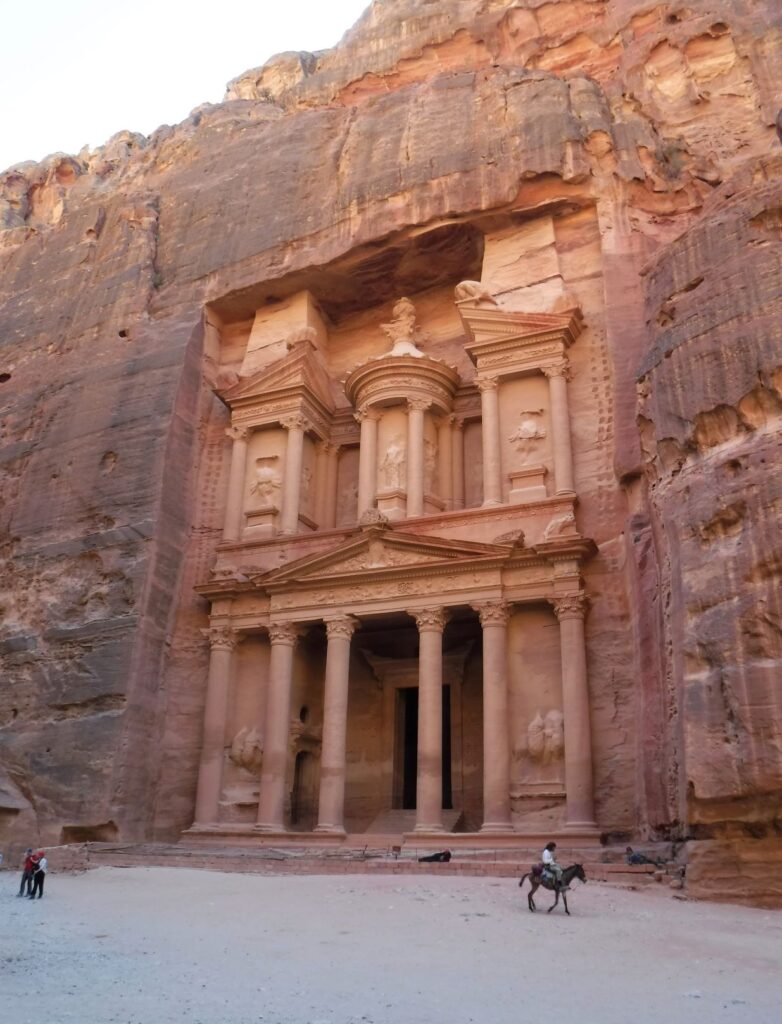
Moving past Al Khazna, and passing through another, shorter chasm, the path broadens onto the ‘Street of Facades’. This dramatic scape marks the tombs of Nabataeans, an Arabic tribe of nomads that settled in southern Jordan and created the monumental carvings at Petra.
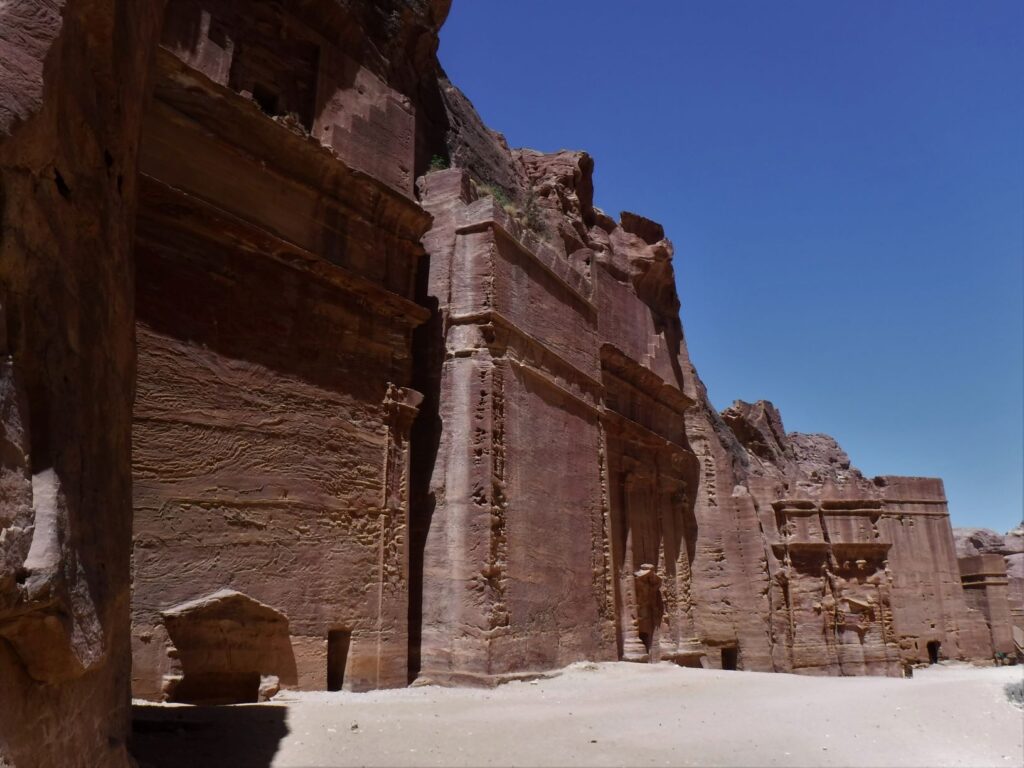
Young kids roam up and down the the ancient roadway on donkeys, asking if you want a ride, or a ‘taxi’, or a ‘Ferrari’, some offering ‘air conditioning’. Blokes in their early twenties cruise around, dressed (as my sister, a Jordan travel veteran, described them perfectly) like pirates, with flashy headscarves and robes, dark eyeliner, and their mounts sporting colourful tasseled saddles. I brought carrots with me on my second and third days, sharing them amongst the saddest looking donkeys. There are signs about urging visitors to report maltreatment of animals, and I ripped into one kid for giving his donkey too much whip.
Beyond the Facades sits a theatre, carved out of the sandstone hillside. The thought of having to remove all that rock my hand blows my mind. The Nabataeans must have been really keen on live entertainment.

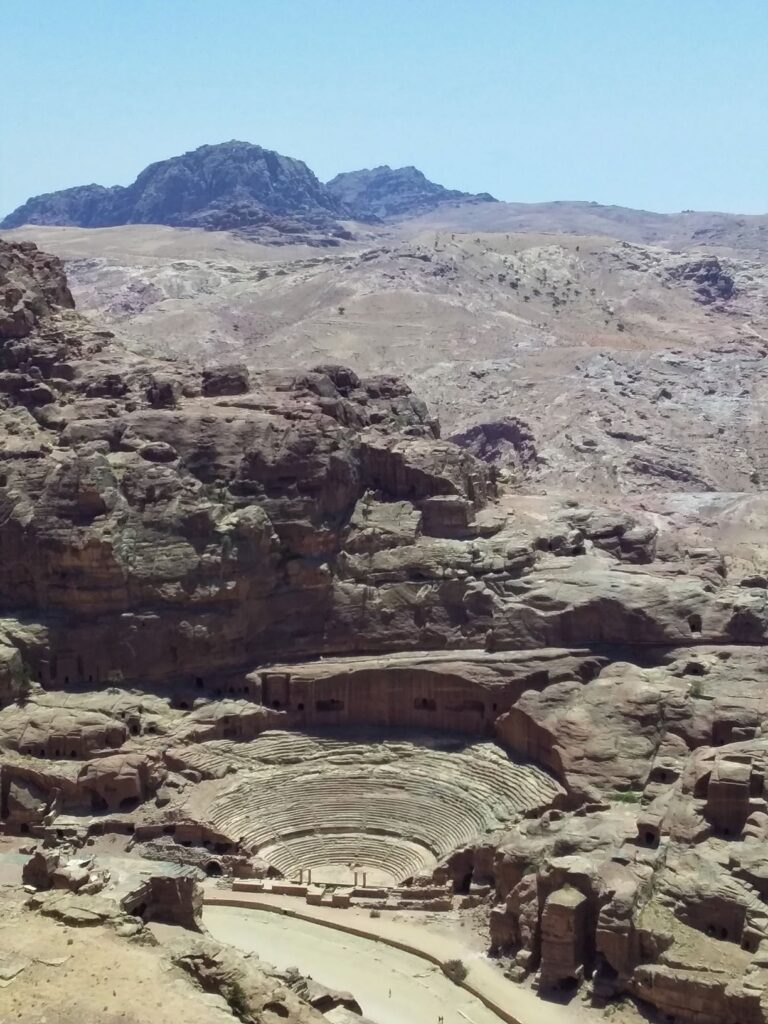
From the theatre more tombs line the eastern cliffs, and the road broadens into the Colonnaded Street. Apparently this thoroughfare was a bustling market area in Petra’s heyday. The street leads to the Great Temple complex, which covers an impressive 7000 square metres.
‘Right you blokes. I want you to build me a 4000 seat theatre. Here are your tools, I’ll see you in three years when you’re finished’
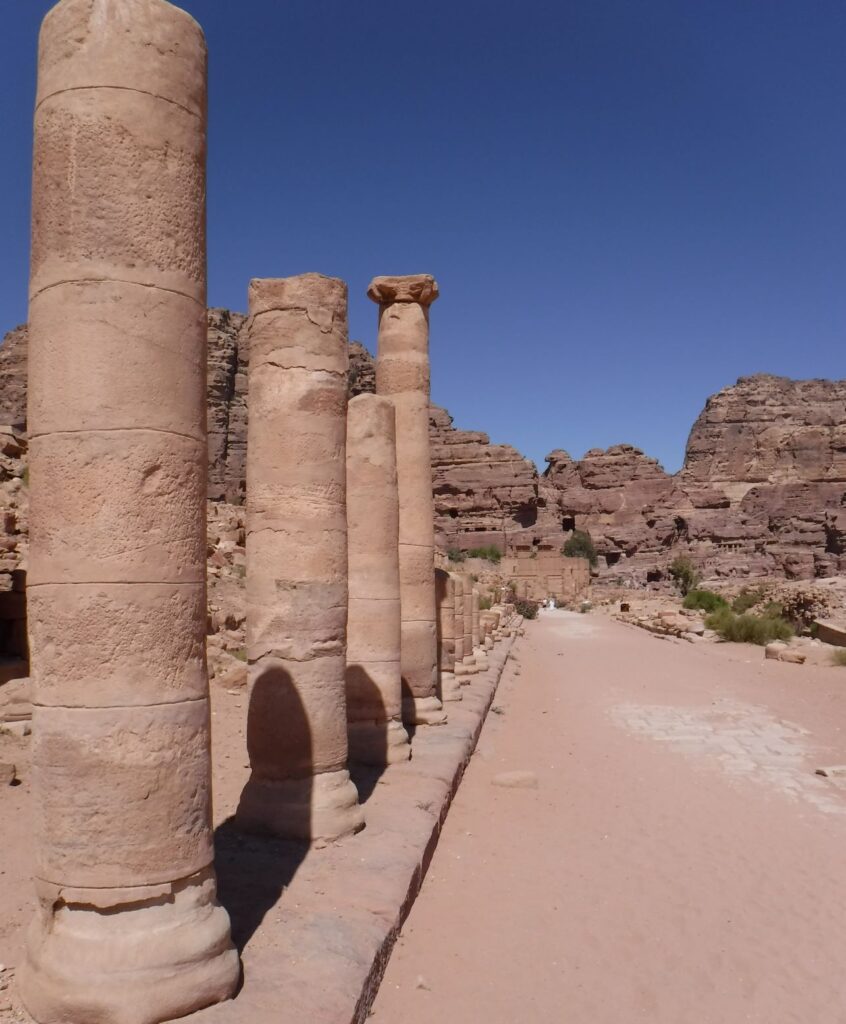
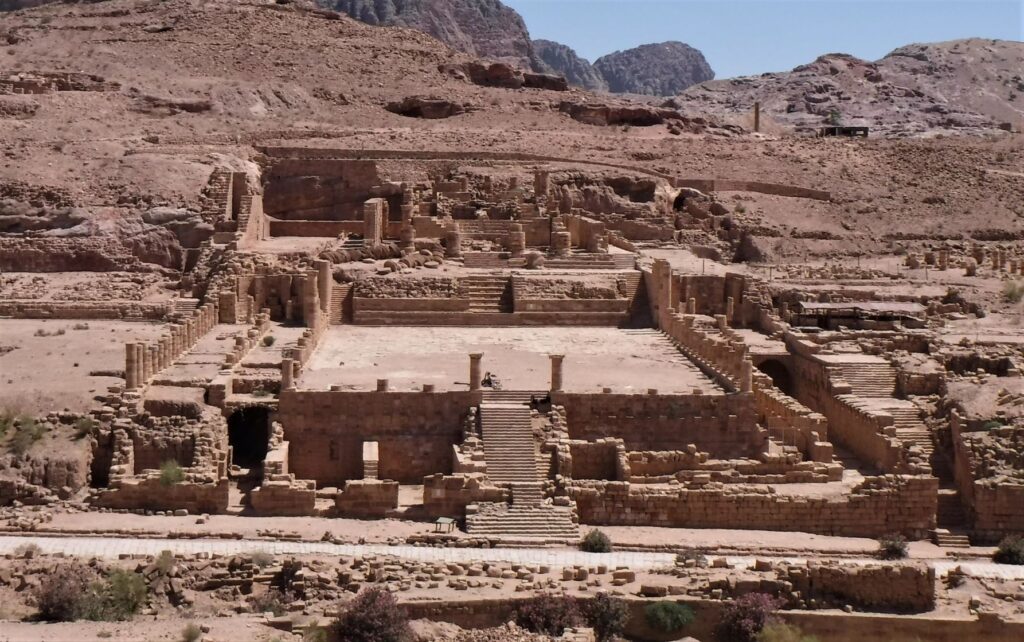
West of the Great Temple sits Petra’s grandest built monument, Qasr al-Bint. Jordan lies on top of an active tectonic zone, and consequently receives its fair share of earthquakes. Big rumbles in the past levelled much of the city’s built heritage, but Qasr al-Bint still stands after over 1500 years.
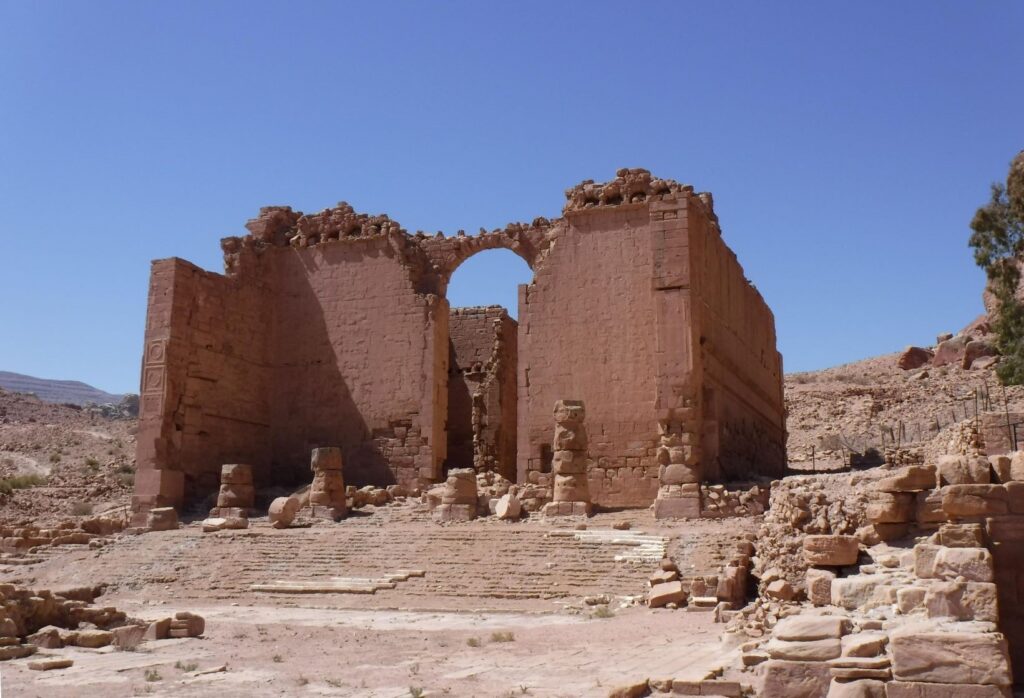
South of the main site of Petra, a walking track climbs steeply, arriving at the ‘High Place of Sacrifice’. Instead of building stone benches, the Nabateans chose to excavate a sunken floor. The commitment to their work is unquestionable and still evident, as is the sacrificial alter.

After visiting this site, I continued on the walking track which descended the far side of the hill. The trail eventually winds its to Qasr al-Bint, although amongst all the goat tracks it’s a little hard to follow. I ended up off track, and decided to cut cross-country to reach the Great Temple.
‘Hello.’ A little voice from somewhere called out. The local kids are always calling out, so I said ‘ hello’ back without looking around. ‘Hello. Where go?’ I turned to see a tiny figure, wearing trainers, pants with a dress over the top in the popular Muslim way, a little jacket, and a scarf wrapped around her head and face, with only her eyes and the bridge of her nose showing. It wasn’t a lady’s scarf, but more similar to the headscarves worn by blokes. She must have been about 5. ‘Where go?’ ‘Over there’ I gestured, indicating I was heading around the hill and down. I walked on. ‘Come.’ I turned again. The little figure beckoned me to follow her. I did so, and my tiny guide strode ahead, walking a couple of metres ahead of me, leading up a track to the top of the hill. ‘Come.’
Reaching the top of the hill, we passed a little souvenir and drinks tent, where the little girl said ‘drinks water cola’ in an disinterested and monotone voice. She walked straight past and I followed, until she sat her tiny self on a rock and pointed down to the Great Temple. ‘There.’ I thanked her for showing me the way, and reached into my pack for some dried figs I had brought. I opened up the bag and offered them to her, and she shyly took one with her little fingers. We munched our figs, and I gave her the bag with the remaining fruit. She stood up and wandered back towards the shop, where an older boy – a brother or cousin perhaps – promptly took them from her. I waved and said ‘bye’, and she waved back.

A walking track climbs from Qasr al-Bint through the red sandstone to the Ad Deir, also known as ‘The Monastery’, and on my final day at Petra I went to have a look. Leaving the wadi, I began the climb, which passes through many Bedouin tea stalls and souvenir shops. Somewhere near the start of the walk, a dog appeared beside me. There are a few dogs around Petra; some are shy and probably get a bit of a hard time from the locals, and others appear more friendly and comfortable around people. My new walking mate was definitely the latter, and trotted along with me up the steep, stepped track.
It was a warm day, and I was pretty sure the dog would have been getting a bit dry in the mouth like I was. She darted through the sunny sections of the track and paused in the shadows. Despite my advice to go back to her camp, she seemed determined to reach Ad Deir with me. Arriving at the top, we walked around the hillside for my first look at Ad Deir. There were four other tourists there, who soon headed back down leaving me and my little mate to share my water and marvel at the breathtaking carving. The dog had likely been there many times before, so I did most of the marveling.
She had seen it all before, after all…
After climbing to a higher vantage point, the view back east to Ad Deir was spectacular. Well I thought so, anyway.
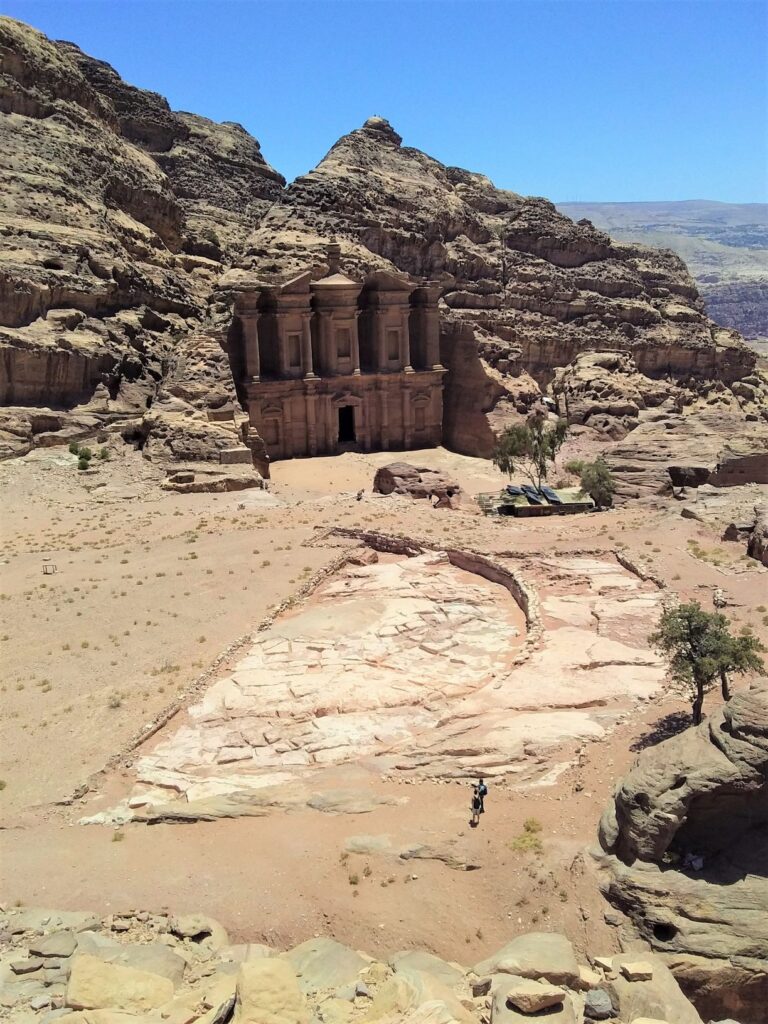
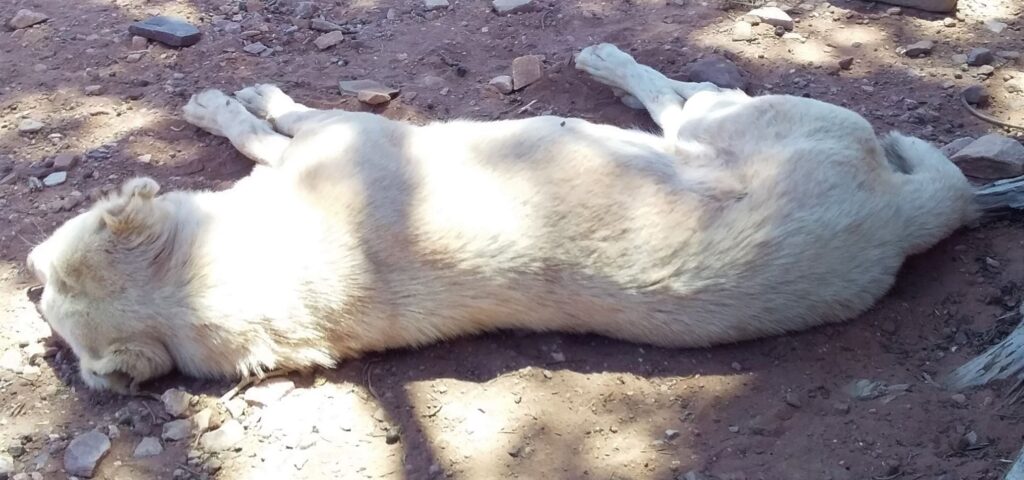
The view west was worth a look, too.
Mind your step…
Exploring ancient Petra really fires the imagination for times long past. I’ve only described some of the sites that can be explored; if you like history, and want to walk around a place that looks like an adventure movie set, put Petra on your travel list.
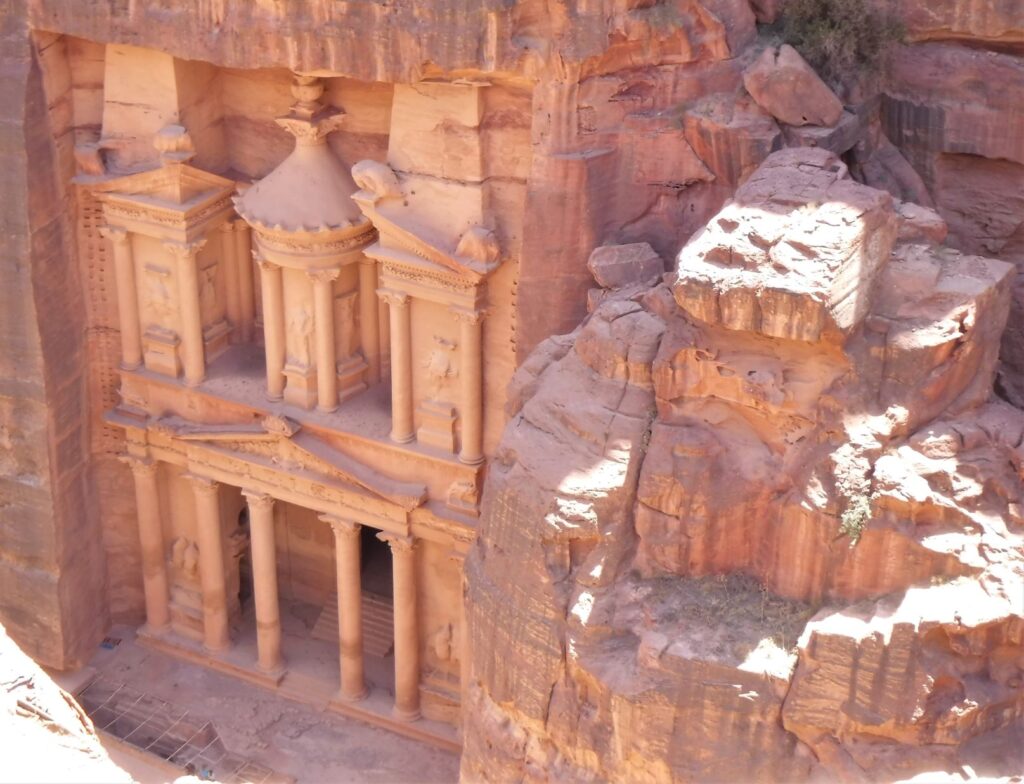
For the official guide to Petra click here
If you enjoyed this post, you may also like Wadi Rum, A Chance Meeting in Wadi Rum
Leave a Reply